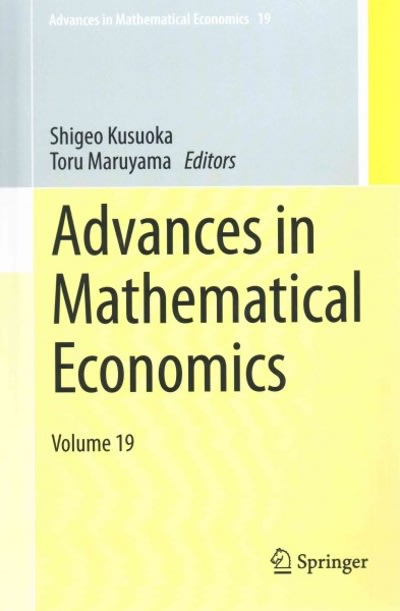Question
From the aftereffects of the Physicians' Health Study (examined prior in this part), a significant factor in Mls is by all accounts the cholesterol level.
From the aftereffects of the Physicians' Health Study (examined prior in this part), a significant factor in Mls is by all accounts the cholesterol level. The information in the going with table recognize the quantity of Mls over the number in the cholesterol classification for each arm of the examination.
Cholesterol Level Aspirin Placebo (mg per 100 mi.) Group
< 159 2/382 9/406 160-209 12/1587 37/1511 210-259 26/1435 43/1444 > 260 14/582 23/570
a Did the randomization in the examination appear to work effectively of adjusting the cholesterol levels between the two gatherings? Clarify. b Construct a 2 x 2 table of anti-inflamatory medicine versus fake treatment MI reaction for every one of the four cholesterol levels. Lessen the information in each table to the chances proportion.
c Compare the four chances proportions you found to some extent (b). Remark on the connection between the impact of anti-inflamatory medicine on cardiovascular failures and the distinctive cholesterol levels. Do you see why chances proportions are convenient devices for summing up information in a 2 x 2 table?
Question 30
Is a litigant's race related with their opportunity of getting capital punishment? This dubious issue has been concentrated by numerous analysts. One significant informational index was gathered on 326 cases in which the respondent was sentenced for crime. Capital punishment was forced on a day and a half these cases. The going with table shows the respondent's race, the manslaughter casualty's race, and whether capital punishment was forced.
White Defendant
Capital punishment No Death Penalty
White Victim 19 132 Whi Black Victim 0 9 Blac
Source: Radelet (1981). a Construct a solitary 2 x 2 table appearance punishment versus respondent's race across all manslaughter casualties. Ascertain the chances proportion and decipher it. b Decompose the table partially (a) into two 2x2 tables of punishment versus litigant's race, one for white murder casualties and one for dark crime casualties. Compute the chances proportion for each table and decipher every one.
c Do you see any irregularity between the consequences of section (a) and the aftereffects of part (b)? Would you be able to clarify the clear conundrum?
Question 31
The Titanic was an enormous extravagance sea liner that was announced to be an "resilient boat." During its launch across the Atlantic Ocean, it hit an ice sheet and sank on April 14, 1912. Enormous quantities of individuals lost their lives. The monetary status of the travelers has been generally assembled by whether they were voyaging five star, below average, or second rate class. The team has been accounted for independently. Albeit the specific numbers are as yet an issue of discussion, one report (Dawson 1995) of the quantities of the individuals who did constantly not get by, by monetary status and sex, is shown in the table that follows.
Populace Exposed to Risk Number of Deaths
Financial Status Male Female Male Female First Class 180 145 118 4 Second Class 179 106 154 13 Third Class 510 196 422 106 Crew 862 23 670 3
a Find the chances of a male in top notch biting the dust on the Titanic. b Find the chances of a male in second rate class kicking the bucket on the Titanic. c Find the chances proportion of a male in top of the line comparative with a male in second rate class biting the dust on the Titanic. d Find the chances of a female in five star biting the dust on the Titanic. e Find the chances proportion of a male in top notch to a female in a similar class biting the dust on the Titanic.
Question 32
Volunteers offer significant types of assistance to the local area. For September 2004, the quantities of guys and females in the U.S. populace and the quantities of the individuals who volunteer by age classification are shown in the following table.
Age (in years) Males Females Population Volunteers Population Volt,' 16 to 19 8,245 2,072 8,001 2 20 to 24 10,146 1,727 10,084 2 25 to 34 19,383 3,956 19,593 6 35 to 44 21,232 6,068 21,936 8 45 to 54 20,255 5,917 21,187 7 55 to 64 14,033 3,869 15,173 4 65 and more than 14,727 3,402 19,946 5 Total 108,021 27,011 115,920 37,
Source: U.S. Registration Bureau.
a What is the likelihood that an arbitrarily chosen individual, matured at any rate 16 years, is anything but a volunteer? b What is the likelihood that an arbitrarily chosen male, matured at any rate 16 years, is a volunteer? c What is the likelihood that an arbitrarily chosen volunteer, matured in any event 16 years, is a male? d What is the likelihood that a haphazardly chosen female, matured in any event 65 years, is a volunteer?
Step by Step Solution
There are 3 Steps involved in it
Step: 1

Get Instant Access to Expert-Tailored Solutions
See step-by-step solutions with expert insights and AI powered tools for academic success
Step: 2

Step: 3

Ace Your Homework with AI
Get the answers you need in no time with our AI-driven, step-by-step assistance
Get Started


